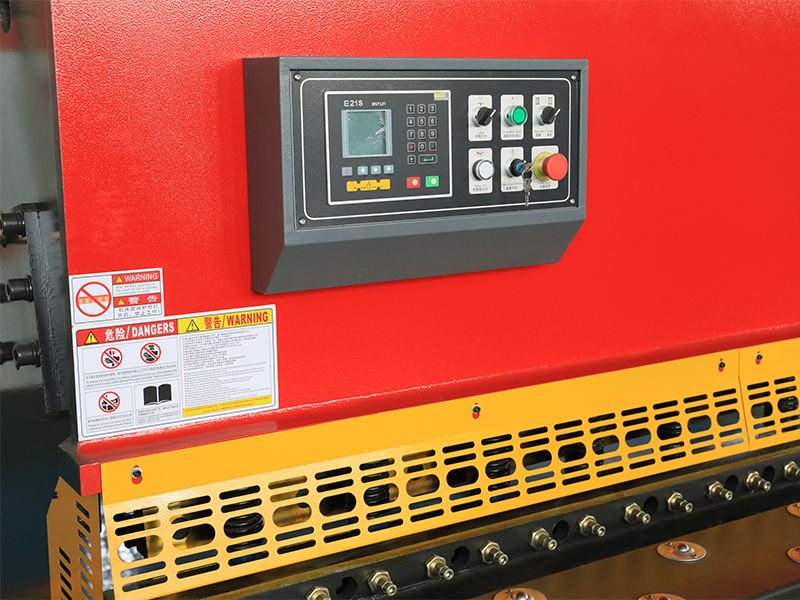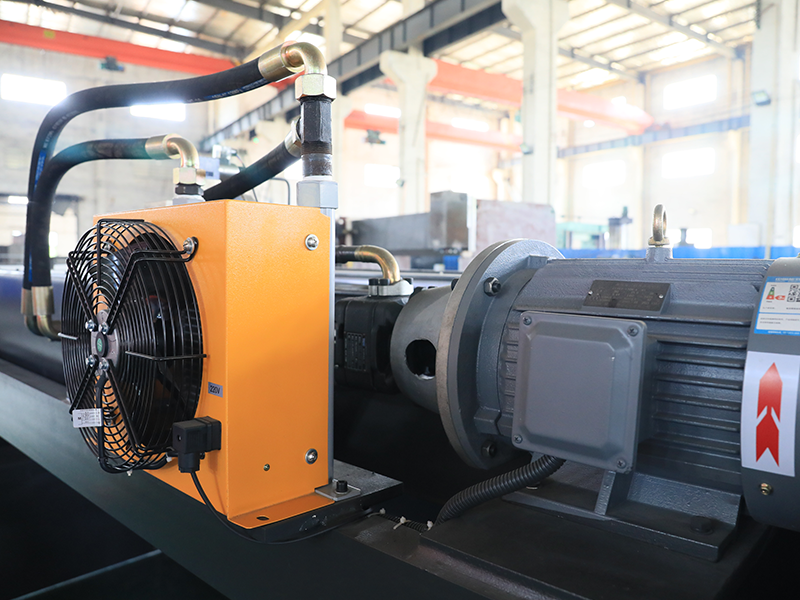How to check and adjust the quality of shearing machine blades
Release Time:
Sep 02,2024
Check the strength of the weld: Grind the back of a turning tool with a green silicon carbide grinding wheel and check the thickness of the solder layer. The thickness is required to be less than 0.15 mm. There should be no pores and insufficient solder at the bottom surface of the tip support. The weld that is not filled with solder should not be greater than 10% of the total length of the weld. If there are pores, the blade will fall off during cutting.

The items and requirements for the welding quality inspection of shearing machine blades are as follows:
1. Check the strength of the weld: Grind the back of a turning tool with a green silicon carbide grinding wheel and check the thickness of the solder layer. The thickness is required to be less than 0.15 mm. There should be no pores and insufficient solder at the bottom surface of the tip support. The weld that is not filled with solder should not be greater than 10% of the total length of the weld. If there are pores, the blade will fall off during cutting.
2. Check the position of the blade in the knife groove: If the blade is misplaced and droops beyond the provisions of the technical conditions, it should be re-welded. Shearing machine blade
3. Check the welding strength: Use a wooden hammer or a copper hammer to hit the blade with medium force, or use an I hammer to hit the knife bar with strong force. At this time, the blade does not fall off from the knife groove. It is qualified. Check the welding strength of the blade. It is not necessary to check them one by one. The spot check method is also adopted.
4. Check the flatness of the blade: If there are obvious pits on the blade, it means that the blade is overheated and deformed, and a new blade should be burned and re-welded.
5. Check for cracks: After the blade is cleaned with kerosene, if the blade of the shearing machine has cracks, kerosene will penetrate into the cracks and black lines will appear, which can be observed with the naked eye. It can also be observed with a 10-40 times magnifying glass.
To check for cracks in the blade, you can also use the color flaw detection method: use a solution made of 65% kerosene, 30% transformer oil and 5% turpentine, and add a little Sudan red. Place the lathe blade part in the solution for 10-15 minutes, then wash it with clean water, apply a layer of white clay (kaolin), and observe its surface after drying. If there are cracks on the blade, the color of the solution will appear on the white clay, which can be seen with the naked eye. Cracked blades cannot be used and need to be re-welded.
1. Remove the lower blade and clean it piece by piece.
2. The blade can be used on all four sides, and select the good side to install it tightly. And check the straightness of the blade in both horizontal and vertical directions.
3. Remove the upper blade and clean it piece by piece. Similarly, the blade can be used on all four sides. Select the good side and install it tightly. And check the straightness of the blade in both horizontal and vertical directions.
4. The upper blade is fixed and cannot be adjusted. We adjust the gap of the shearing machine blade by adjusting the lower blade.
5. Find the left and right two gap-enlarging screws of the lower blade, which are usually on the outermost side.
6. Find the left and right two set screws of the lower blade that push the lower blade to narrow the gap. There are locking spare nuts on it. Usually on the inside.
7. Loosen the four left and right bolts of the lower blade table.
8. Manually turn the upper blade down to the appropriate position, and the operator goes to the blanking area of ??the shearing machine to start adjusting.
9. Use a feeler gauge to coarsely adjust to 0.5 mm from the unengaged part of the upper and lower blades on the left hand.
10. Manually turn the blade up to the middle position and coarsely adjust to 0.5 mm.
11. Manually turn the blade to the middle position on the right side where the upper and lower blades are not disengaged, and coarsely adjust to 0.5 mm.
12. Manually turn the upper blade down to the appropriate position and start fine adjustment.
13. Use a feeler gauge to fine-tune from the unengaged part of the upper and lower blades on the left hand until the feeler gauge can fit three threads and cannot fit five threads.
14. Manually turn the blade to the middle position and start fine-tune until the feeler gauge can fit three threads and cannot fit five threads.
15. Manually turn the blade to the position on the right side where the upper and lower blades are not disengaged, and start fine-tune until the feeler gauge can fit three threads and cannot fit five threads.
16. The above is for new cars, fine-tune until the feeler gauge can fit three threads and cannot fit five threads.
17. For old cars, fine-tune until the feeler gauge can fit ten threads and cannot fit twenty threads. Or make appropriate adjustments according to 1/10--1/20 of the required sheet metal thickness.
18. When the shearing machine has a sharp blade, if there are burrs on the edge of the sheared plate, the gap between the upper and lower blades can be appropriately reduced.




